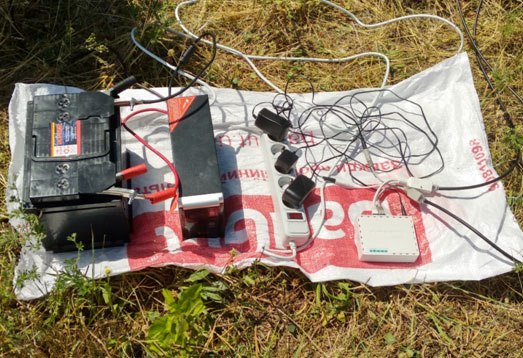Methods and Systems for Managing Wireless Sensor Networks with Mobile Sensors, Telecommunications Ground Nodes and Aerial Platforms in an Emergency Zone
The Goal of the research work is to develop methodology and technical proposals for providing reliable communication and timely and high-quality information of search and rescue works in the emergency area on the basis of the use of wireless sensor networks with mobile sensors, telecommunication ground nodes and aero platforms and their efficient management while providing structures-functional connectivity of mobile sensors in conditions of their fast and unpredictable movement. The research is based on scientific and technical idea, which consists in the scientific substantiation and development of a set of methods, algorithmic and software tools for realization of multilevel dynamic architecture of wireless sensor network (WSN), all elements of which are mobile. The realization of this idea is based on the statement that the receipt of the operative information should be carried out in a minimum time about the events occurring in the emergency area (state of the operational landscape, directions of search and ways of rescue, location of the victims and objects of danger, priority of rendering of assistance, trends of emergency, support and protection of rescuers and medical personnel, localization of looters and their neutralization, restoration of communication and prevention of panic). The system will consist of several levels: the first level - a mobile network of wireless multisensor platforms of airborne platforms - flying drones, which form an adaptive network of primary information
supply; The second tier is the Telecommunication Aerial Platforms (TAs) designed to collect and subsequently process and manage information from the lower tier network, as well as to communicate with telecommunication ground nodes or directly with the Emergency Management Center. New and improved methods and protocols for the interaction of sensor nodes in the wireless sensor network with mobile sensors (WSNMS) at different levels of the OSI model, taking into account the principles of building a multi-level adaptive WSNMS, is developed. New methods and algorithms for combining high-speed digital radio equipment based on 802.11xx standards for transport and distribution components of the communication network and upgraded for the needs of power departments of wired equipment of digital flow routing, switching and information distribution have been developed. This makes it possible to flexibly configure combined wired and wireless information transmission systems and to adapt them flexibly to suit your needs and requirements. Methods and techniques for determining the interconnectivity of sensor nodes and gateways of multilevel adaptive WSNMS are proposed, taking into account the technical characteristics of their transceivers and the actual topographic conditions of the operational landscape is suggested. Methods and techniques of energy saving of sensor units equipped with power batteries are proposed. Recommendations for software-defined radio systems (SDR) protocols are proposed by using advanced decision-making algorithms for the use of a particular signal-code structure (SCS) of modulation type, noise-coding, OFDM subcarrier number. Proposals have been developed on the use of specialized cryptographic information security equipment for use in digital networks, which will provide the necessary level of protection of information against the interference of third parties in the content of transmitted information. The results of the approbations of the received theoretical and constructive proposals were made on the basis of the Ukrainian Research Institute of Civil Defense, the Institute of Problems of Mathematical Machines and Systems of NAS of Ukraine, PJSC SIA "ELMIZ".

| Долучення | Розмір |
|---|---|
| 885.83 КБ |




